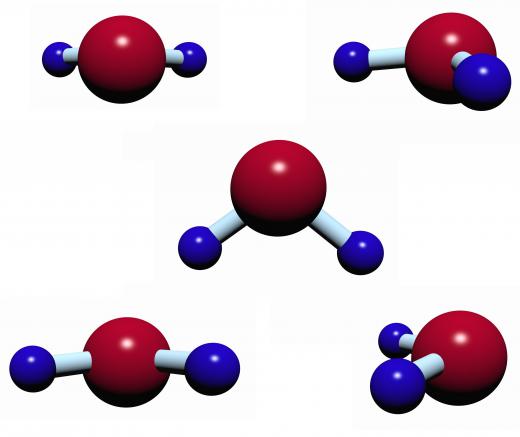At AllTheScience, we're committed to delivering accurate, trustworthy information. Our expert-authored content is rigorously fact-checked and sourced from credible authorities. Discover how we uphold the highest standards in providing you with reliable knowledge.
What are Cationic Surfactants?
Cationic surfactants are basically soaps or detergents, in which the hydrophilic, or water-loving, end contains a positively-charged ion, or cation. Typical examples are trimethylalkylammonium chlorides, and the chlorides or bromides of benzalkonium and alkylpyridinium ions. All are examples of quats, so named because they all contain a quaternary ammonium ion.
All soaps or surfactants, short for surface active agents, work by the same basic principle, based on the fact that most substances in nature are either hydrophilic, or water-loving, or lipophilic, or fat-loving. Hydrophilic substances dissolve readily in water, and lipophilic substances dissolve in hydrocarbons, which are organic compounds containing a lot of carbon and hydrogen.

The usual job of these soaps or detergents is to make lipophilic substances — like oils, fats, and greases — soluble in water, so they can be washed away. Since water easily dissolves ionic substances, or materials that contain one or more charged atoms, and hydrocarbons dissolve oils, fats, and greases, a detergent molecule has a hydrocarbon end and an ionic end. The hydrocarbon end of the soap molecule dissolves in a particle of grease or oil, leaving the ionic end exposed to the water.

When enough soap molecules have embedded their hydrocarbon ends in the particle, the surrounding water molecules attract the ionic ends of the surfactant. The particle then becomes emulsified, or suspended in water. In this form, it can be rinsed away.
The hydrophilic portion of a surfactant can be one of four types. It may be be nonionic but still very water soluble; zwitterionic, meaning it contains both positive and negative charges; anionic, or negatively charged; or cationic, which is positively charged. The charge on the ionic portion significantly affects the properties of the surfactant.
Soaps, strictly defined, are always anionic, so the charged end has a negative charge. They are very good at emulsifying oily dirt and keeping it suspended in water, and have good sudsing properties. They may, however, react with metal ions present in hard water, such as calcium and magnesium, to form insoluble soap scums.
Cationic surfactants are almost all man-made, and their ionic portion is positively charged. They are good emulsifying agents too, and do not form insoluble scums with positively-charged hard-water ions. These surfactants have also been found to be good bactericides and some find use as topical antiseptics. Their germicidal properties make them especially useful in bathroom and hand sanitizers.
Furthermore, cationic surfactants are attracted to negatively-charged sites that occur naturally on most fabrics. They can bind to these sites and provide the fabric with a soft, luxurious feel. For this reason, they are often used as fabric softeners.
AS FEATURED ON:
AS FEATURED ON:












Discussion Comments
Great article, but how can you see from a molecule structure if a surfactant is anionic or cationic?
What are the side effects from using this product in the the rinse water after washing in a washing machine?
This was very helpful! I am studying capillary electrophoresis and this topic came up.
Post your comments